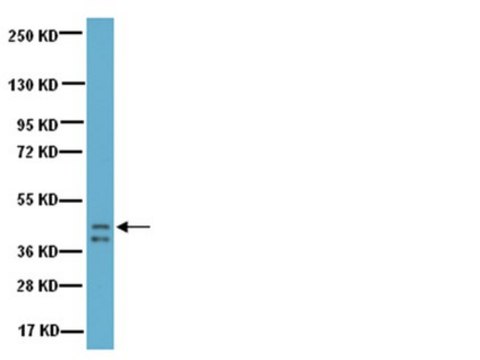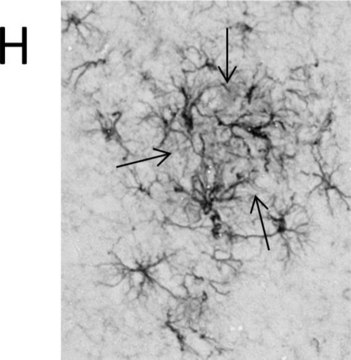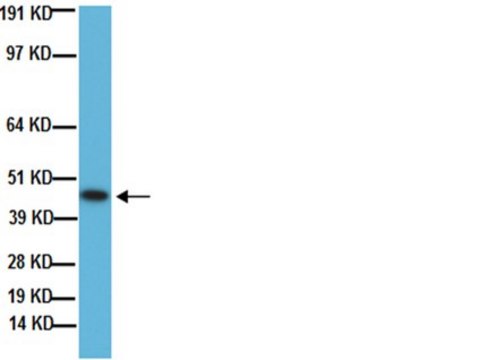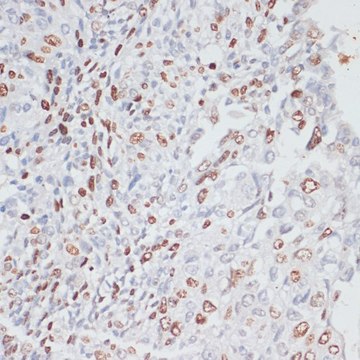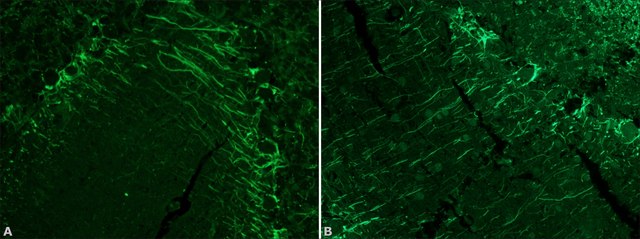G9264
Monoclonal Anti-Growth Associated Protein-43 antibody produced in mouse
clone GAP-7B10, ascites fluid
Synonym(s):
Anti-GAP-43
About This Item
Recommended Products
biological source
mouse
Quality Level
conjugate
unconjugated
antibody form
ascites fluid
antibody product type
primary antibodies
clone
GAP-7B10, monoclonal
mol wt
antigen 46 kDa
contains
15 mM sodium azide
species reactivity
hamster, human, feline, rat, chicken, snake, mouse
technique(s)
immunohistochemistry: suitable
western blot: 1:2,000 using newborn rat brain extract
isotype
IgG2a
UniProt accession no.
shipped in
dry ice
storage temp.
−20°C
target post-translational modification
unmodified
Gene Information
human ... GAP43(2596)
mouse ... Gap43(14432)
rat ... Gap43(29423)
Related Categories
General description
Specificity
Immunogen
Application
- immunostaining of tissue sections from the prefrontal cortex and hippocampus of rat pups to recognize an epitope present on kinase C domain in the N terminal of GAP-43 protein
- immunohistochemistry at a working dilution of 1:3000 using sections from fetal and adult brains of mice
- immunofluorescence at a working dilution of 1:4000 using 8μm sections of mice brain
- western blotting using hippocampal lysates from rats
Biochem/physiol Actions
Disclaimer
Not finding the right product?
Try our Product Selector Tool.
recommended
Storage Class
10 - Combustible liquids
wgk_germany
WGK 2
flash_point_f
Not applicable
flash_point_c
Not applicable
Choose from one of the most recent versions:
Already Own This Product?
Find documentation for the products that you have recently purchased in the Document Library.
Customers Also Viewed
Our team of scientists has experience in all areas of research including Life Science, Material Science, Chemical Synthesis, Chromatography, Analytical and many others.
Contact Technical Service